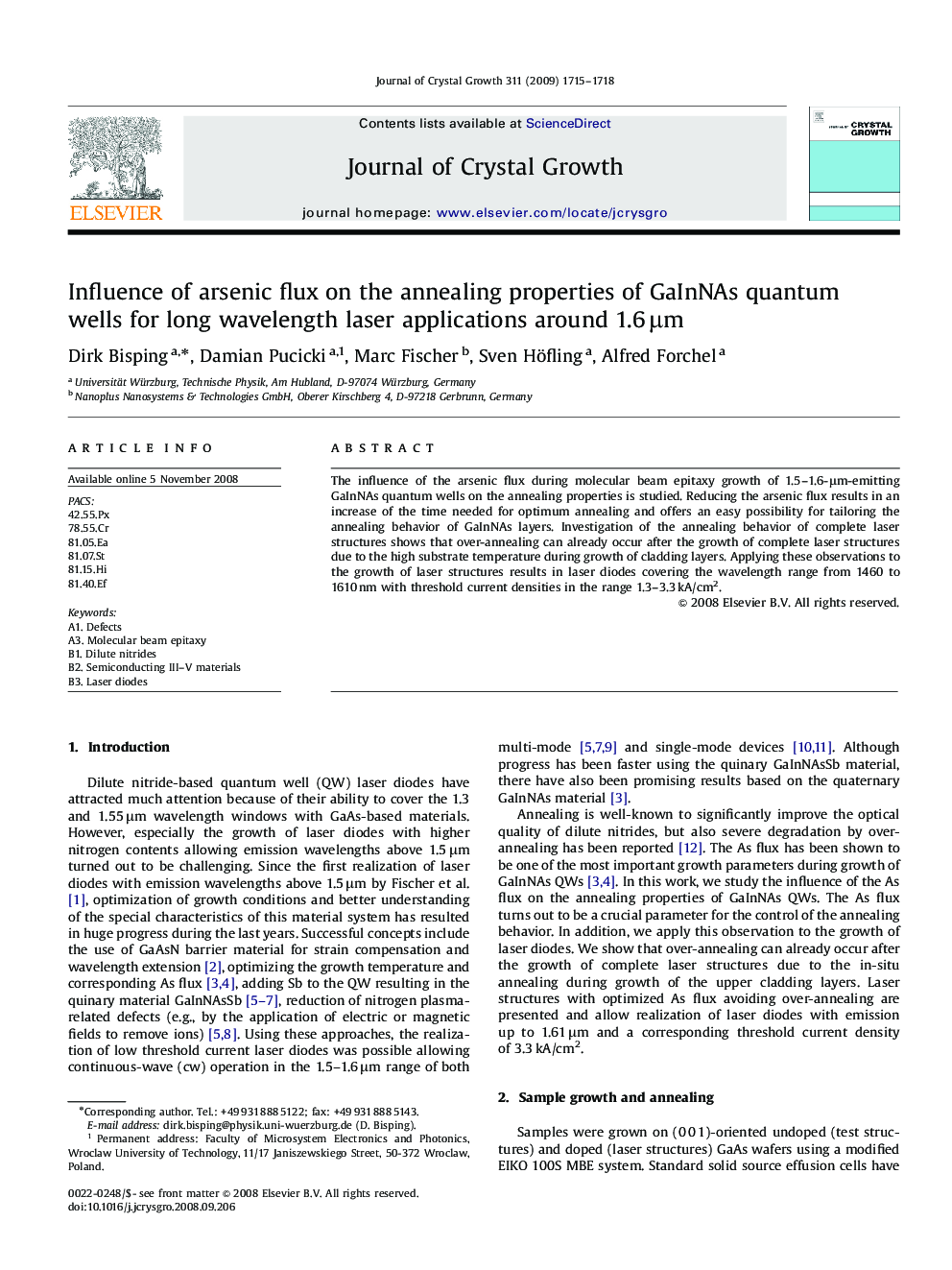| Article ID | Journal | Published Year | Pages | File Type |
|---|---|---|---|---|
| 1794206 | Journal of Crystal Growth | 2009 | 4 Pages |
The influence of the arsenic flux during molecular beam epitaxy growth of 1.5–1.6-μm-emitting GaInNAs quantum wells on the annealing properties is studied. Reducing the arsenic flux results in an increase of the time needed for optimum annealing and offers an easy possibility for tailoring the annealing behavior of GaInNAs layers. Investigation of the annealing behavior of complete laser structures shows that over-annealing can already occur after the growth of complete laser structures due to the high substrate temperature during growth of cladding layers. Applying these observations to the growth of laser structures results in laser diodes covering the wavelength range from 1460 to 1610 nm with threshold current densities in the range 1.3–3.3 kA/cm2.
